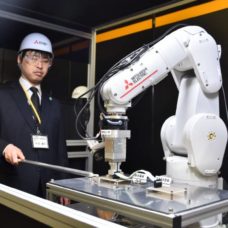A new breath-analyzing AI detects chemical compounds in the exhaled breath as biomarkers to diagnose different diseases.
Diagnosing diseases by smell is an age-old concept.
Hippocrates (c. 460 – c. 370 BC) used to smell the breath of his patients looking for signs of diseases – a fruity smell might indicate diabetes, whereas a fishy smell could be a telltale sign of liver disease.
To make his diagnosis, the Greek doctor also smelled patient’s urine and stool – unpleasant trick for him but could be life-saving to his patients.
Using this technique to detect diseases has fallen into disuse due to more advanced diagnostic approaches. Now, however, thanks to breath-analyzing AI, it’s making a comeback — albeit in a more sophisticated way.
Diseases Have a “Breathprint”
With the development of modern diagnostic methods, physicians have dropped analyzing breath and the sense of smell from their toolkit.
However, using the smell of breath as an indicator of health and sickness is regaining interest.
For many years, researchers have been exploring dogs’ ability to sniff out diseases, such as cancer.
Cancerous cells, for example, release chemical compounds with a subtle scent that dogs can pick up on due to their amazing sense of smell.
Aside from dogs, scientists have been looking to build sort of an “electronic nose” that can detect a disease before the onset of symptoms.
An international team of researchers, led by the Technion-Israel Institute of Technology, developed a breath-analyzing device that can detect diseases based on the airborne chemical compounds they release.
The nanonose was tested on 1,404 patients with 17 different pathologic conditions and scored an 86 percent accuracy in detection.
A variety of “breathalyzers” that use chemical sensors to identify airborne compounds in the exhaled breath and detect diseases are also being developed.
These devices, however, are not quite up to snuff. They also yield large amounts of data that still need human expertise to sift through just to find the right diagnosis. Now, however, a new form of breath-analyzing AI may be able to take over this task.
Read More: One Step Closer to Smell-O-Vision with Virtual Lemonade
Breath-Analyzing AI is Coming, Just Don’t Hold Your Breath for it
Volatile organic compounds (VOCs) are chemicals with a volatility that gives them the ability to spread into the atmosphere, thus causing environmental impacts.
VOCs are also present in our breath at low concentrations, and their amount and makeup could give insights into the state of health.
Some scientists are pursuing the path of VOCs to diagnose lung cancer, but others are working on an AI breathalyzer with an olfactory ability to use as a fast and noninvasive diagnosing tool.
A team of data scientists at Loughborough University in the UK is teaching a Deep Learning Network system how to detect disease-revealing chemical compounds in the human breath.
Andrea Soltoggio, a computer scientist and member of the research team, said in a blog post that:
“A team of doctors, nurses, radiographers and medical physicists at the Edinburgh Cancer Centre collected breath samples from participants undergoing cancer treatment. The samples were then analyzed by two teams of chemists and computer scientists. Once a number of compounds were identified manually by the chemists, fast computers were given the data to train deep learning networks. The computation was accelerated by special devices, called GPUs, that can process multiple different pieces of information at the same time. The deep learning networks learned more and more from each breath sample until they could recognize specific patterns that revealed specific compounds in the breath.”
As is the case with Deep Neural Networks, this AI algorithm will take it from there and learn on its own to improve its capability at detecting diseases over time.
That said, there’s may be a long way to go before breath-analyzing AI enters the detective arsenal of clinicians.
“We simply suggest that AI could be used as a tool to detect substances in the air. It doesn’t necessarily have to diagnose or make a decision. The final conclusions and decisions are left to us,” concluded Dr. Soltoggio.



















Comments (0)
Most Recent